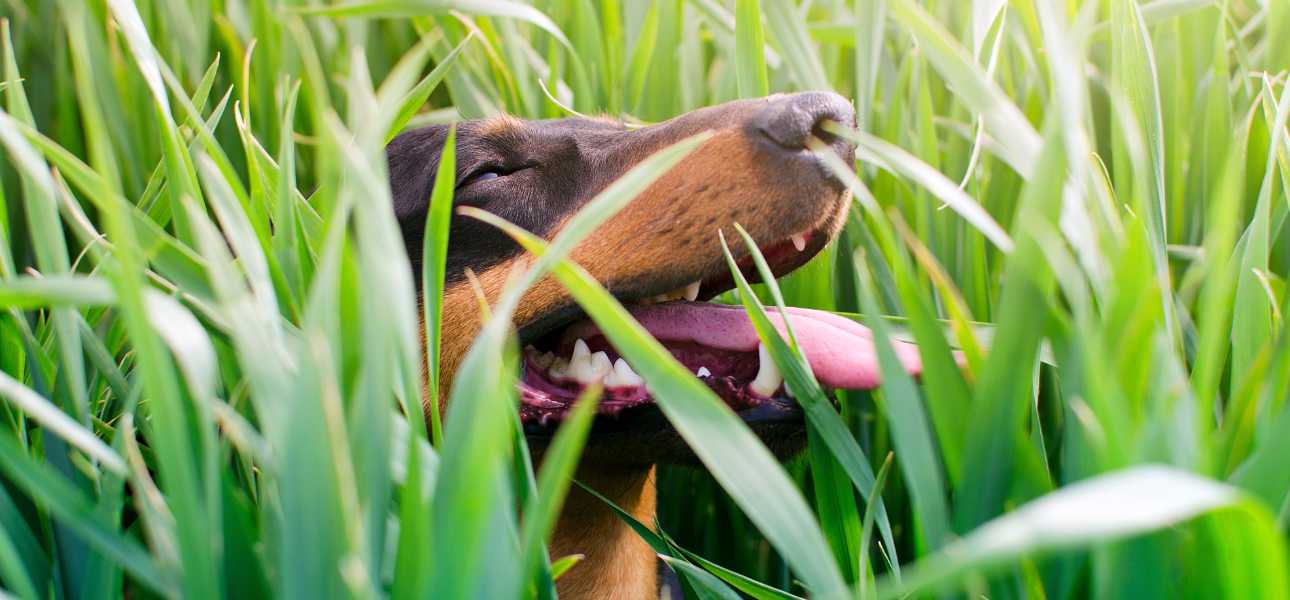Pet-Owners Guide to Repairing Dog-Damaged Lawn

Maintaining a healthy, lush lawn is a desire shared by many, but dog owners often discover the hard way the challenges that come with pets running around, digging, and occasionally grazing on the grass. However, another significant factor in dog ownership that can harm your lawn is dog urine.
Although there's a sense of pride in successfully training your dog to pee outside, their urine can potentially damage your grass, manifesting as unsightly dead grass or yellow patches on your lawn. You may think that lawn damage is inevitable, but you can take proactive measures to prevent urine damage and repair it after the fact with grass repair pods.
How Dog Urine Damages Your Lawn
Like humans, dogs have to relieve themselves, and your lawn is often the most convenient place, particularly when the alternative is inside your home, on your furniture, or the rugs. While it's easy to assume that dog urine is harmful to plants due to the damage they cause, the rich nitrogen levels from urea in your dog's urine actually fertilize the soil.
This effect on the lawn is similar to the effect of nitrogen fertilizers. While a small amount of nitrogen can fertilize the soil and contribute to lush, green growth, excessive nitrogen compounds deposited in a concentrated area can burn your grass, leading to brown patches. If you examine these patches closely, you'll likely notice the surrounding grass growing tall and lush.
It's a common misconception that only female dogs can burn grass. However, both males and females can damage your lawn with urine. The main difference lies in how they urinate: female dogs usually squat, which can concentrate the urine salts in a smaller area, increasing the risk of damage to that spot.

Can You Prevent Urine Spots and Dead Grass?
Theoretically, you can train your dog to urinate in a designated area of your lawn. However, this may not fully solve the problem, as it will result in more concentrated urine that burns grass. Here are a few practical ways to prevent urine spots and damaged grass on your lawn.
Rinse urine spots. Dog urine can damage your grass, but only when you let it. One way to keep your grass green is to flush the affected area with water to rinse away the urine. We recommend using about twice as much water as there is urine to dilute the urine salts in the soil.
Fertilize less. Adjust your fertilizer application in areas where your dog frequently pees to prevent damage, as dog urine already contains nitrogen, and an excess of nitrogen from fertilizer can lead to grass burning.
Increase water intake. The nitrogen concentration in your dog's urine is influenced by their water intake. Simply put, the more water they drink, the more diluted the nitrogen in their urine becomes. Place extra bowls around your home to encourage your pet to drink more water.
Adjust diet. In addition to water intake, your dog's diet plays a significant role in the composition of their urine. Processed proteins commonly found in commercial dog food can lead to higher levels of urea and nitrogen in the urine, which can contribute to lawn damage. Consult your veterinarian to tailor your dog's diet, or consider adding dietary supplements to their routine to prevent further damage to your lawn.
Use a real grass pee pad for dogs. Alternatively, you can keep dog urine completely off the lawn by training your pet to pee on a real grass pad for dogs. Besides saving your lawn from further damage, using a dog grass pee pad reinforces positive potty training habits.
Because it uses natural grass, it recreates the familiar sensory experience your dog associates with bathroom breaks, facilitating a seamless transition to grass pads. These potty training solutions are versatile and suitable for indoor and outdoor use.
Will Grass Grow Back After Dog Urine Damage?
Your grass will naturally regrow over time, even if you don't take any action. However, if you're looking to speed up the process, you can give your lawn a hand in regrowing new grass. After damage occurs, gently rake aside the dead grass and aerate the soil, focusing on the affected area. These actions help facilitate regrowth by creating favorable conditions for new grass to take root and grow. You can also introduce grass plugs into the soil, which provides a faster way to recover your lawn than planting grass seeds.

How to Repair Dog Damage with SodPods® Grass Plugs
Each SodPods® grass plug consists of mature grass with a well-developed root system, measuring approximately 3 inches by 3 inches. When planted 9-12 inches apart, these plugs can cover as much as a square foot.
For successful establishment, we recommend supplementing your plugs with NutriPod®, a specialized grass plug fertilizer designed to provide a gradual and steady release of nutrients in the soil. Place each fertilizer pod into a planting hole before planting grass plugs to ensure accessibility by the roots. Water the grass diligently to keep the soil consistently moist for two weeks. This practice allows the grass to adapt to its new environment and support healthy growth. Afterward, reduce watering to once a week, ensuring deep watering to encourage the roots to grow deeper into the soil.
Repairing dog-damaged grass can be challenging, especially keeping your dog off the lawn. Consider temporarily fencing off the repaired area or training your dog to stay away until the brown spots regrow. There is no perfect way to address dog urine damage in lawns. Fortunately, if your dog over-fertilizes your grass and causes brown, patchy areas, you can easily repair them with SodPods® grass plugs. '
For more tips for a healthy lawn or to explore a wide variety of grass plugs, visit the Try SodPods® website today!

